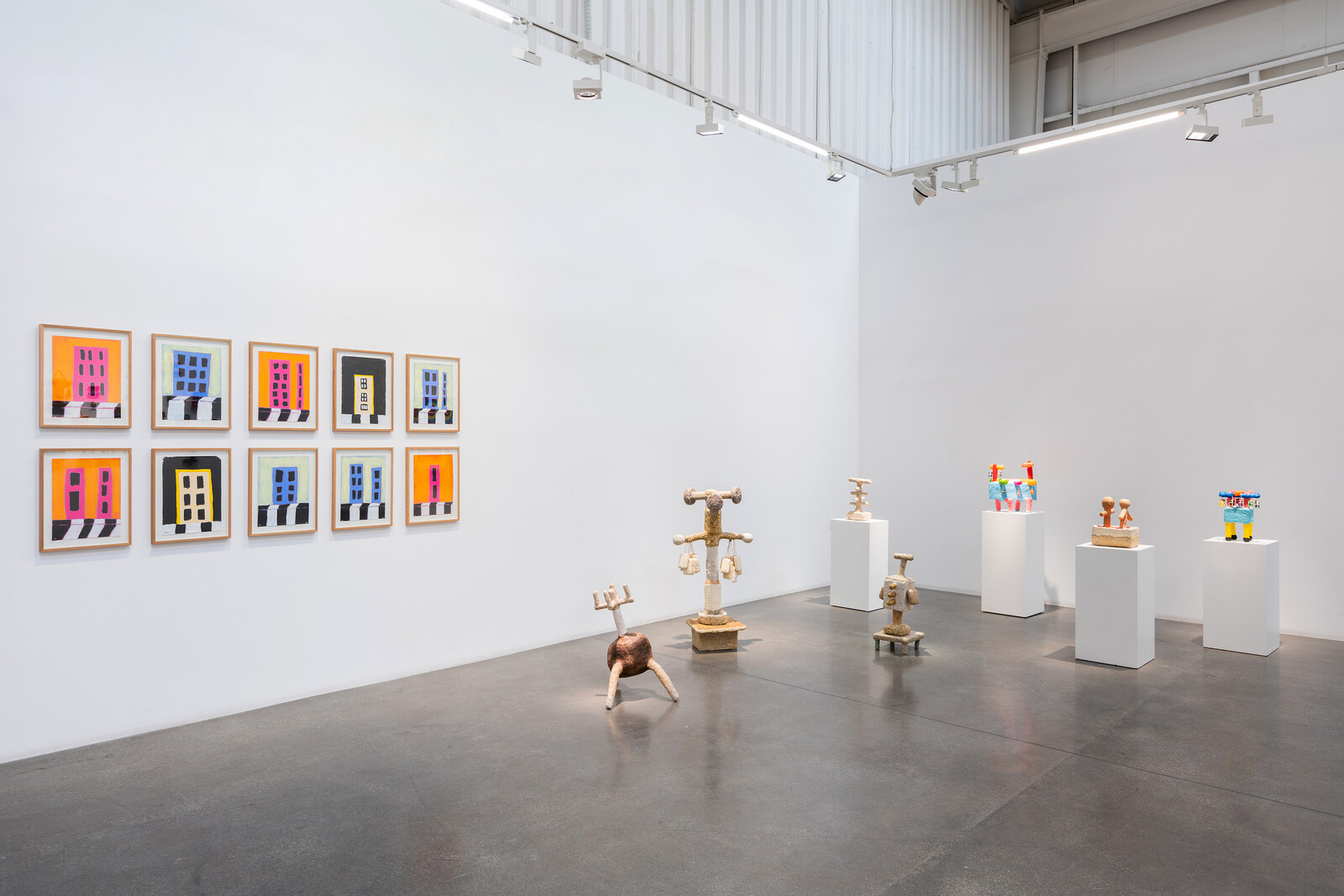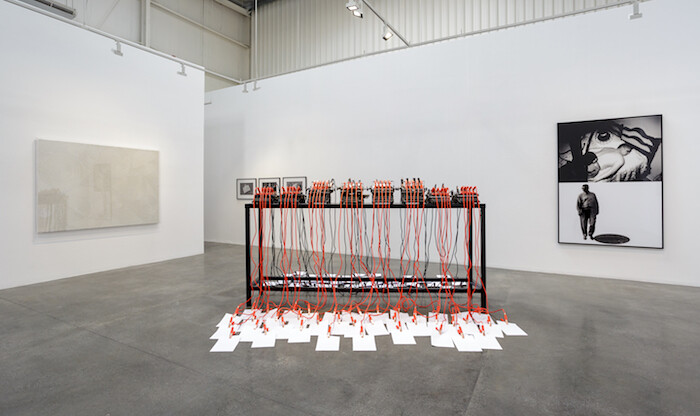Categories
Subjects
Authors
Artists
Venues
Locations
Calendar
Filter
Done
October 16, 2020 – Review
Mohamed Ahmed Ibrahim’s “Memory Drum”
Rahel Aima

When the United Arab Emirates began its slip-and-slide towards fully automated luxury neoliberalism in the 1970s and ’80s, artists responded in one of two ways. Some, like Hassan Sharif, addressed the twinned specters of rapid urbanization and hyperconsumerism by taking the influx of plasticky junk as raw materials for maximalist assemblages. Other members of the Emirati avant-garde—a group dubbed The Five, who formed the Flying House Collective and laid the groundwork for the country’s contemporary art scene—doubled down on their connections to the land and to the old ways of life that were in danger of disappearing.
Among those in the latter category is Mohamed Ahmed Ibrahim, who has always been an alchemist par excellence. The self-taught artist transmutes the rocks, clay, sand, and other natural materials gathered from the Hajar mountains that hug his hometown of Khor Fakkan into land art and, more recently, sculpture and painting. As is the case with all of The Five, his work features an emphasis on seriality and obsessive repetition, particularly in Hanne Darboven-esque ink drawings of tallied lines that accumulate in a frenzied intimation of the skyscrapers and urban sprawl encroaching on his beloved nature. But his visual language, which is …
April 28, 2017 – Review
Mounir Fatmi’s “Inside the Fire Circle”
Kevin Jones

“I don’t know what it’s like to be black in America,” wrote the artist Dana Schutz in her protracted defense against calls for the removal and destruction of her painting Open Casket (2016). She was responding to mounting fervor over her rendition, included in the Whitney Biennial, of the mangled face of African-American teen Emmett Till, savagely murdered in 1955 at the hands of white racists in Mississippi. Arguments on both sides of the divide hovered around the impossible “knowability” of the “other,” with Schutz (clumsily) claiming art as a space of empathy, and her detractors foregrounding the artist’s blithe appropriation of a charged episode in American visual politics, resulting in the trivialization of black suffering. As the debates raged on, this thorny question of knowing the other quietly surfaced in French-Moroccan artist Mounir Fatmi’s show “Inside the Fire Circle” at Lawrie Shabibi in Dubai.
Continuing his fascination with the archive (a mainstay of which is the cogent 2006-2009 project “Out of History” examining the Black Panthers Party), Fatmi has unearthed a moment in late 1950s American race-relations history through the exploits of Texan journalist John Howard Griffin (1920–80). Determined to “experience discrimination” as did a black man in the harshly …